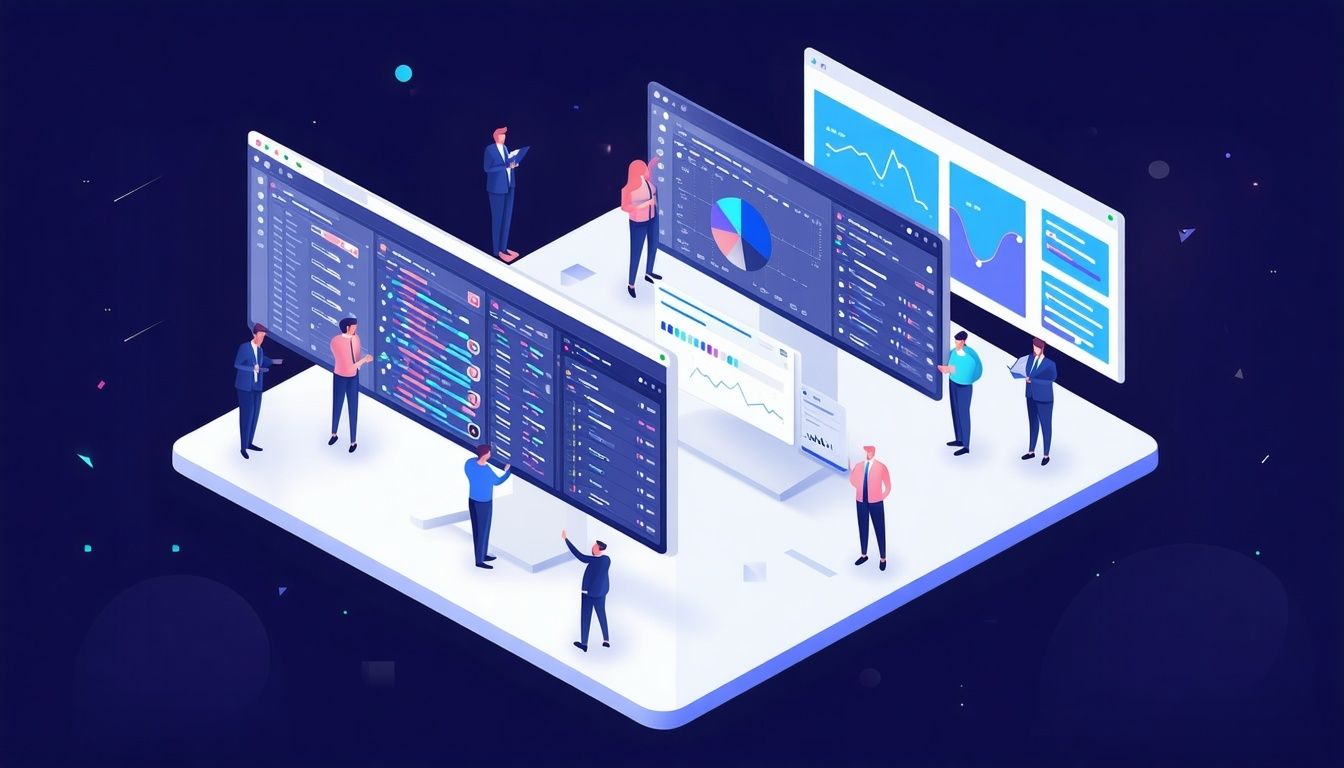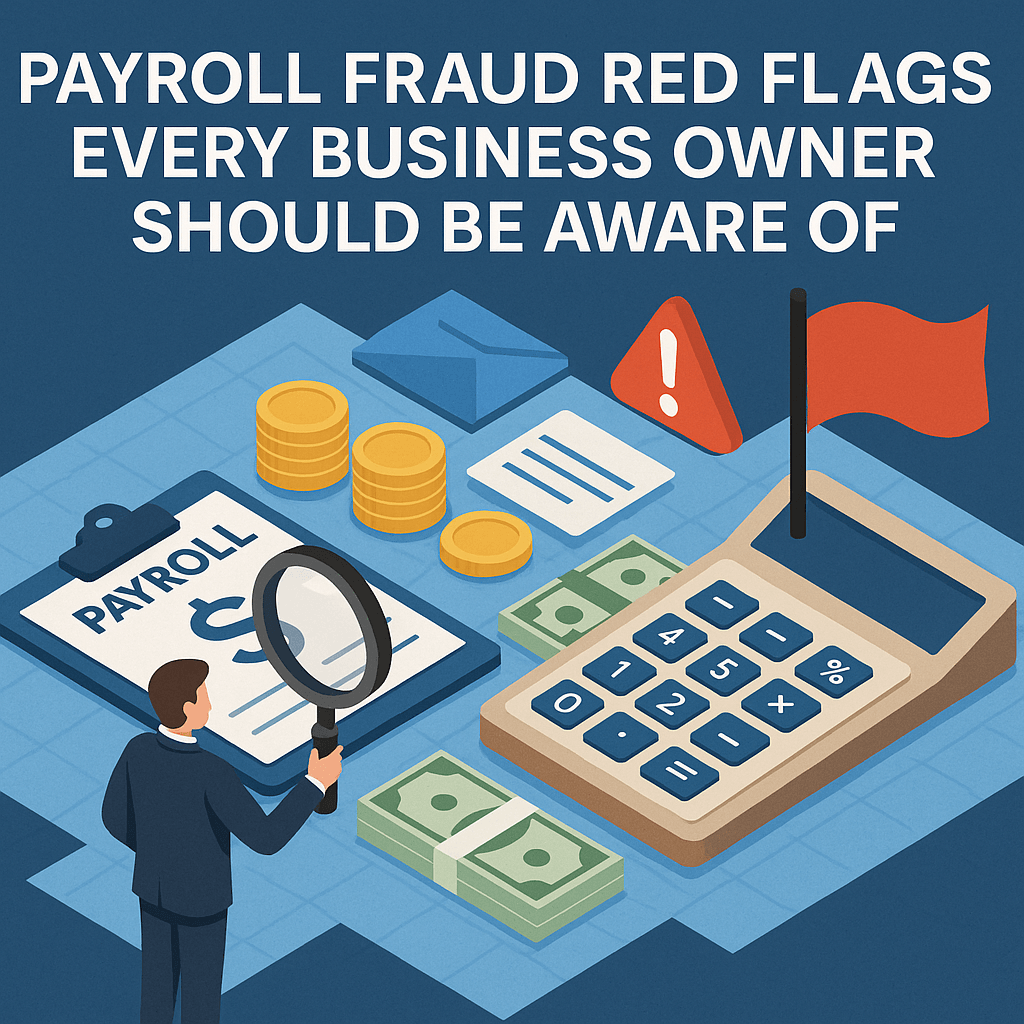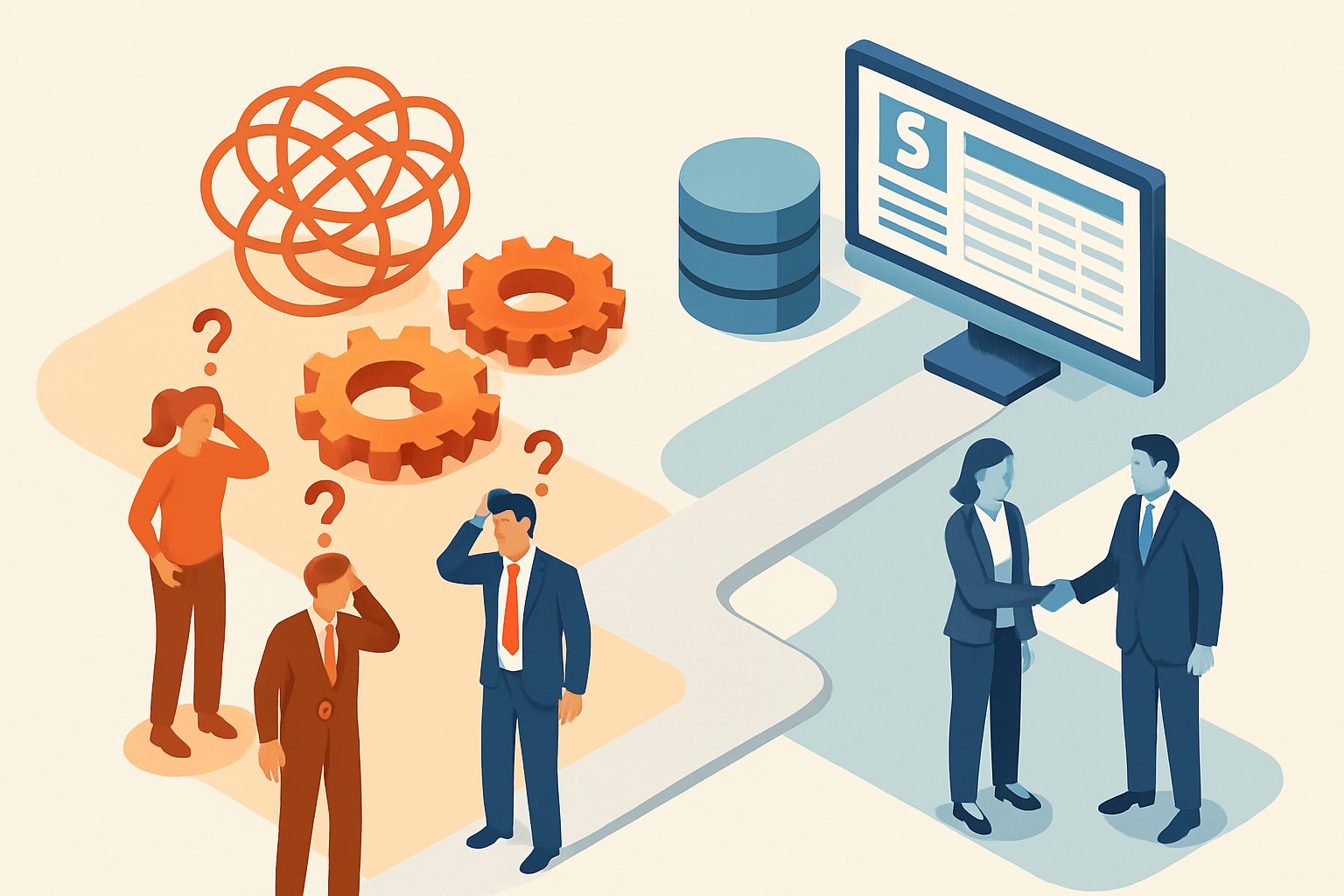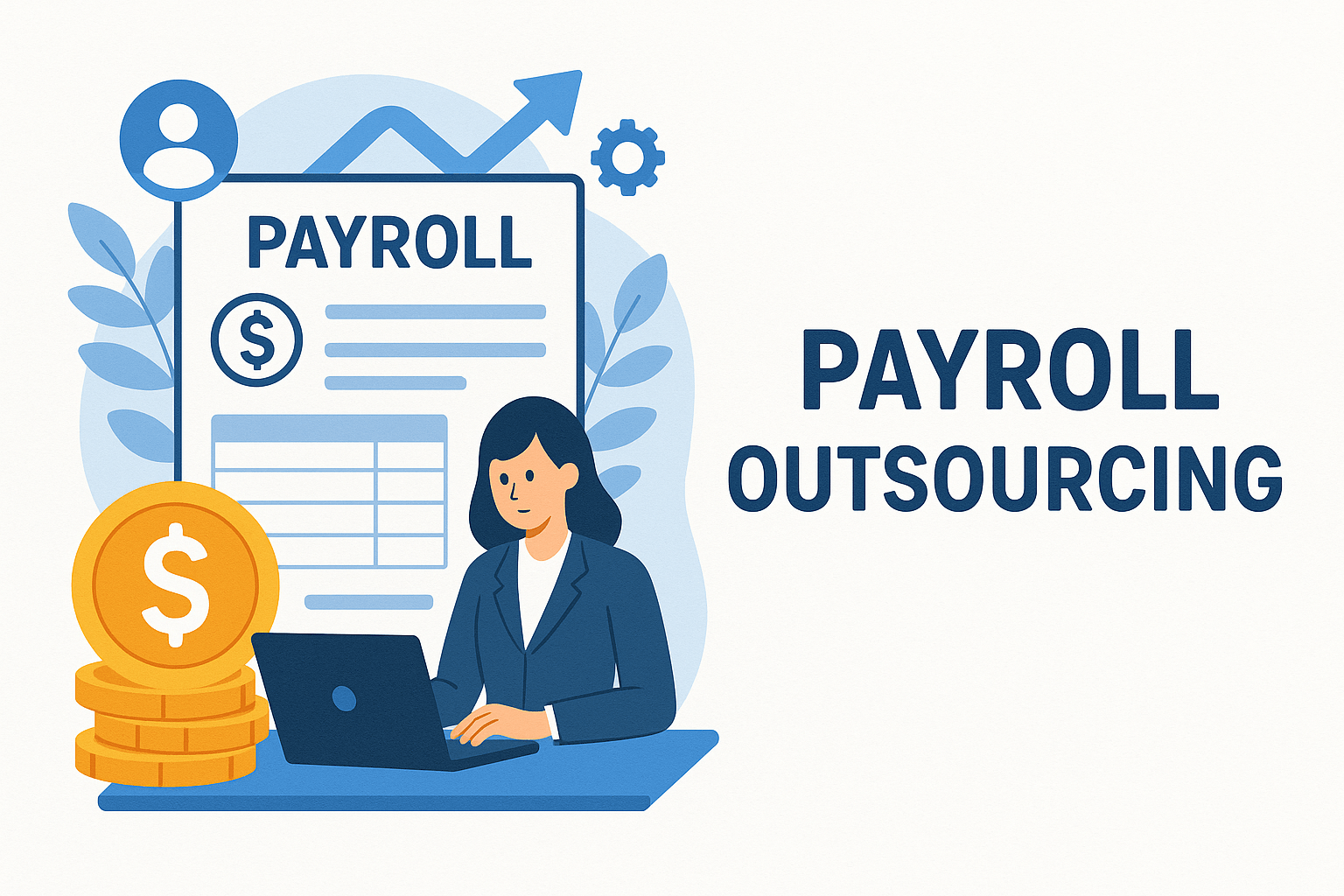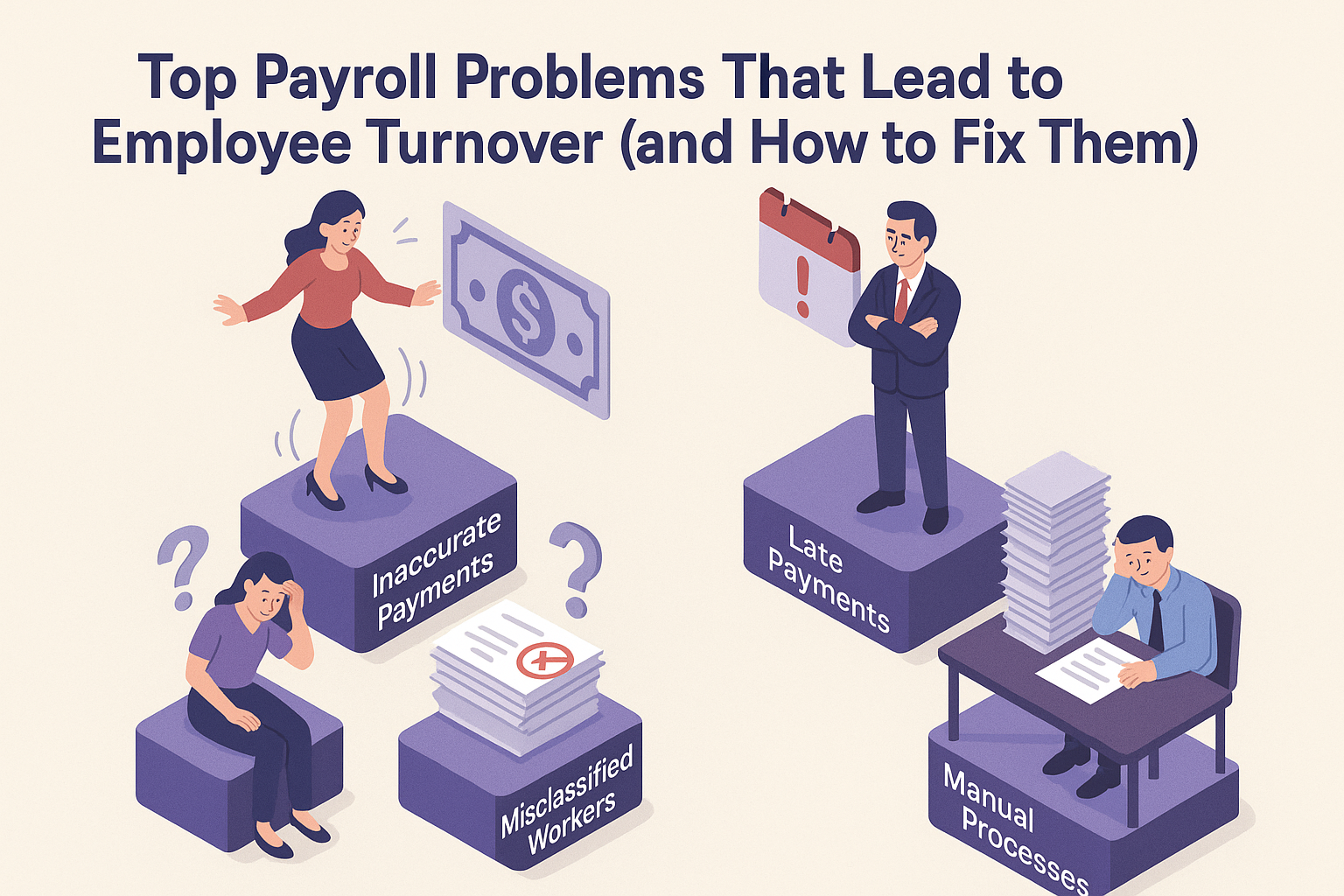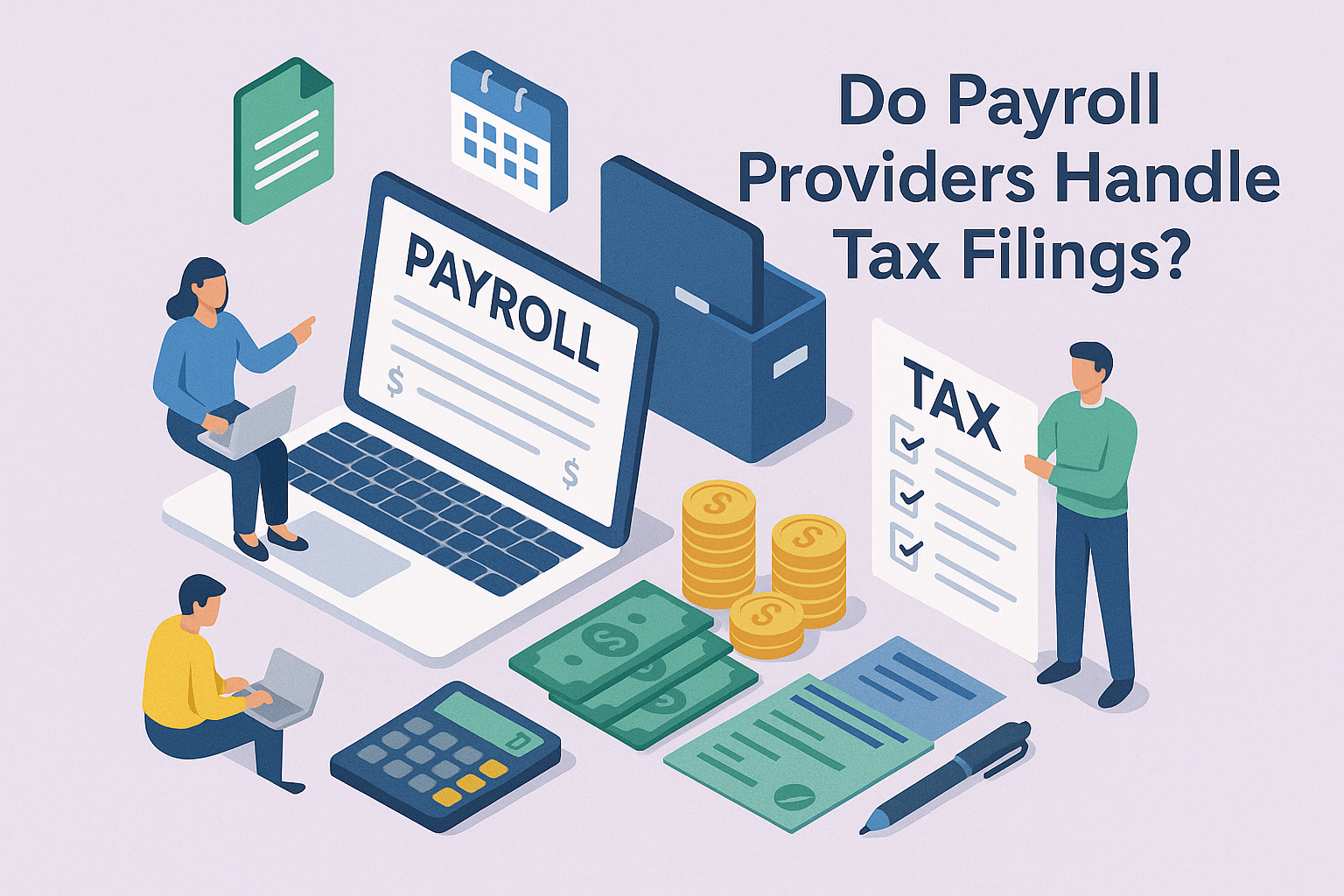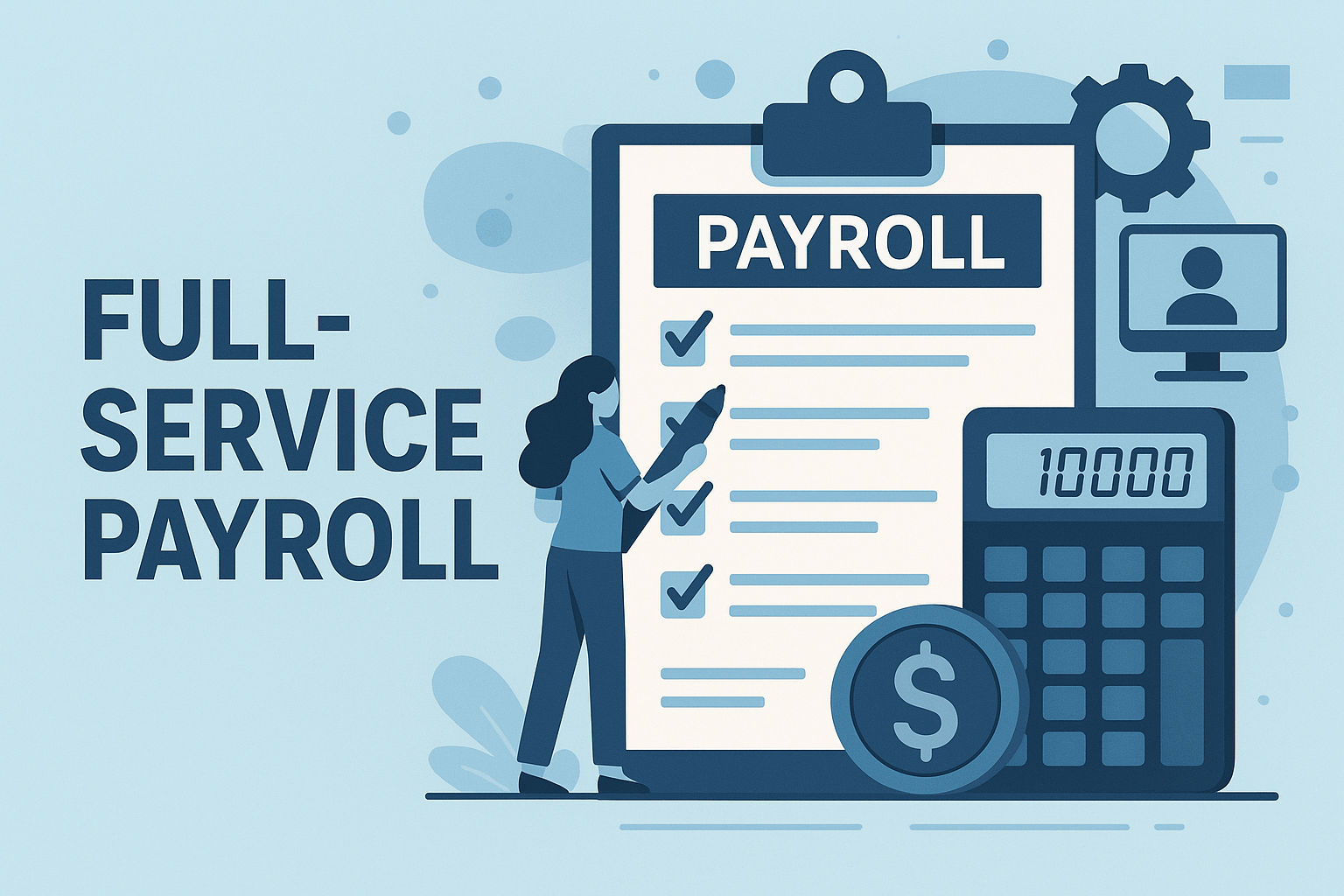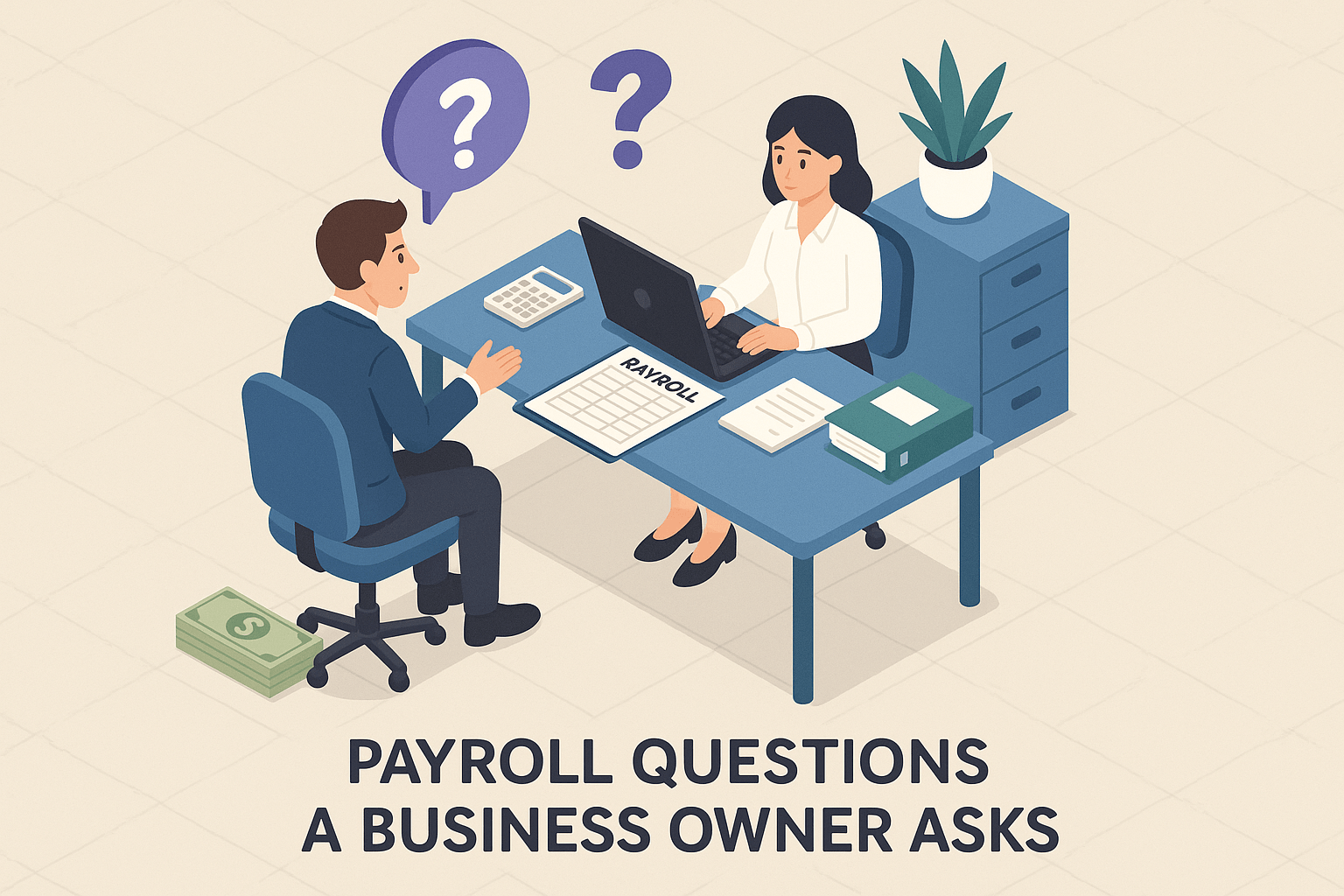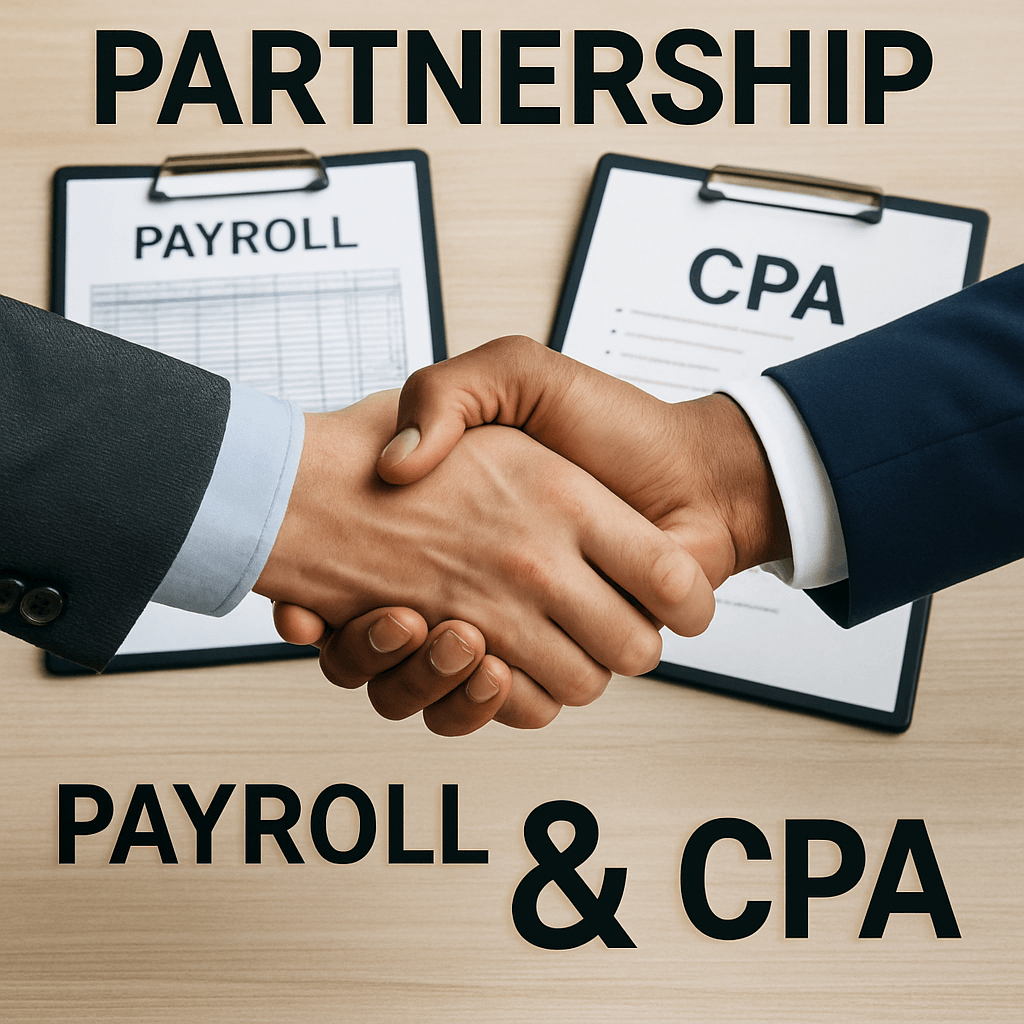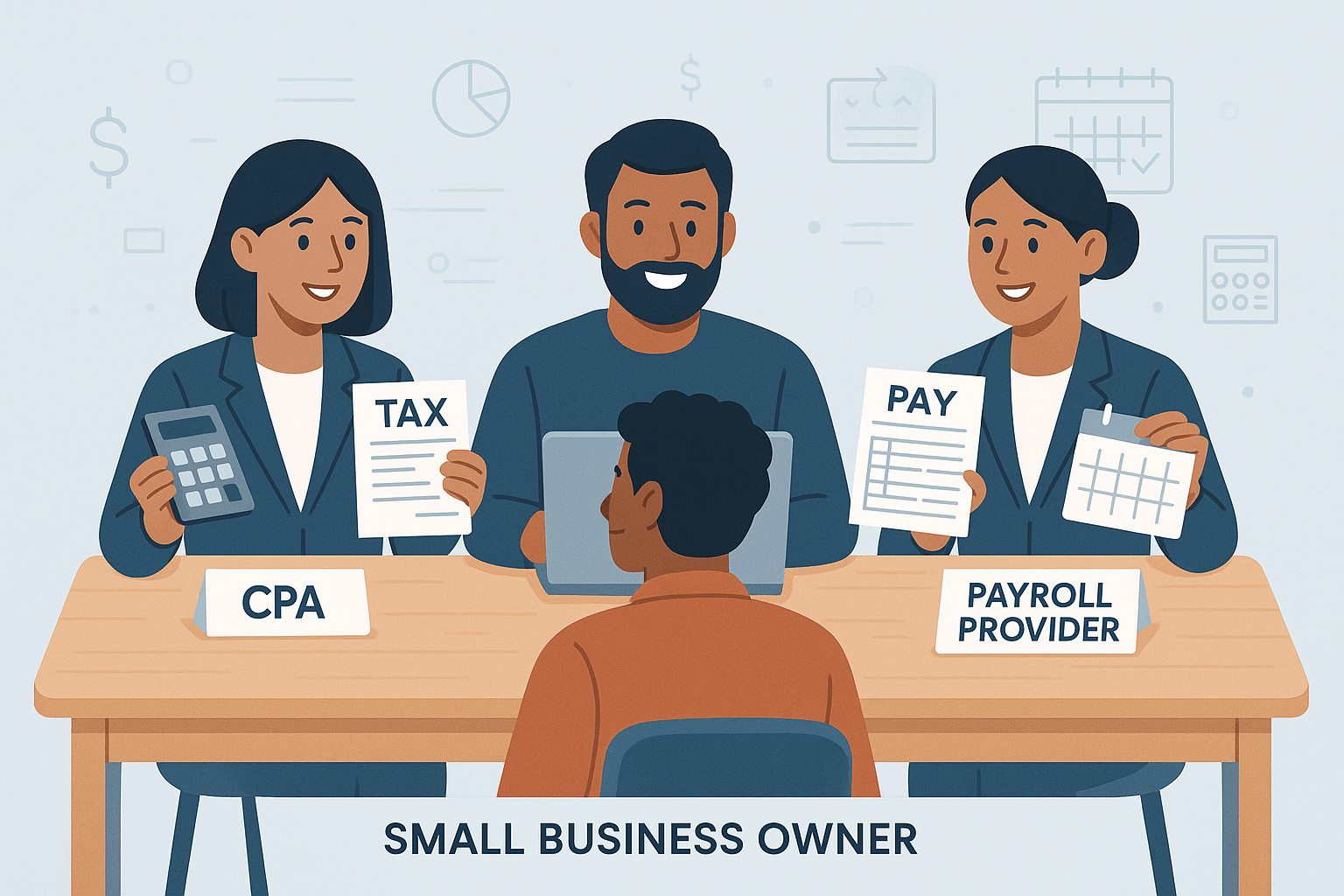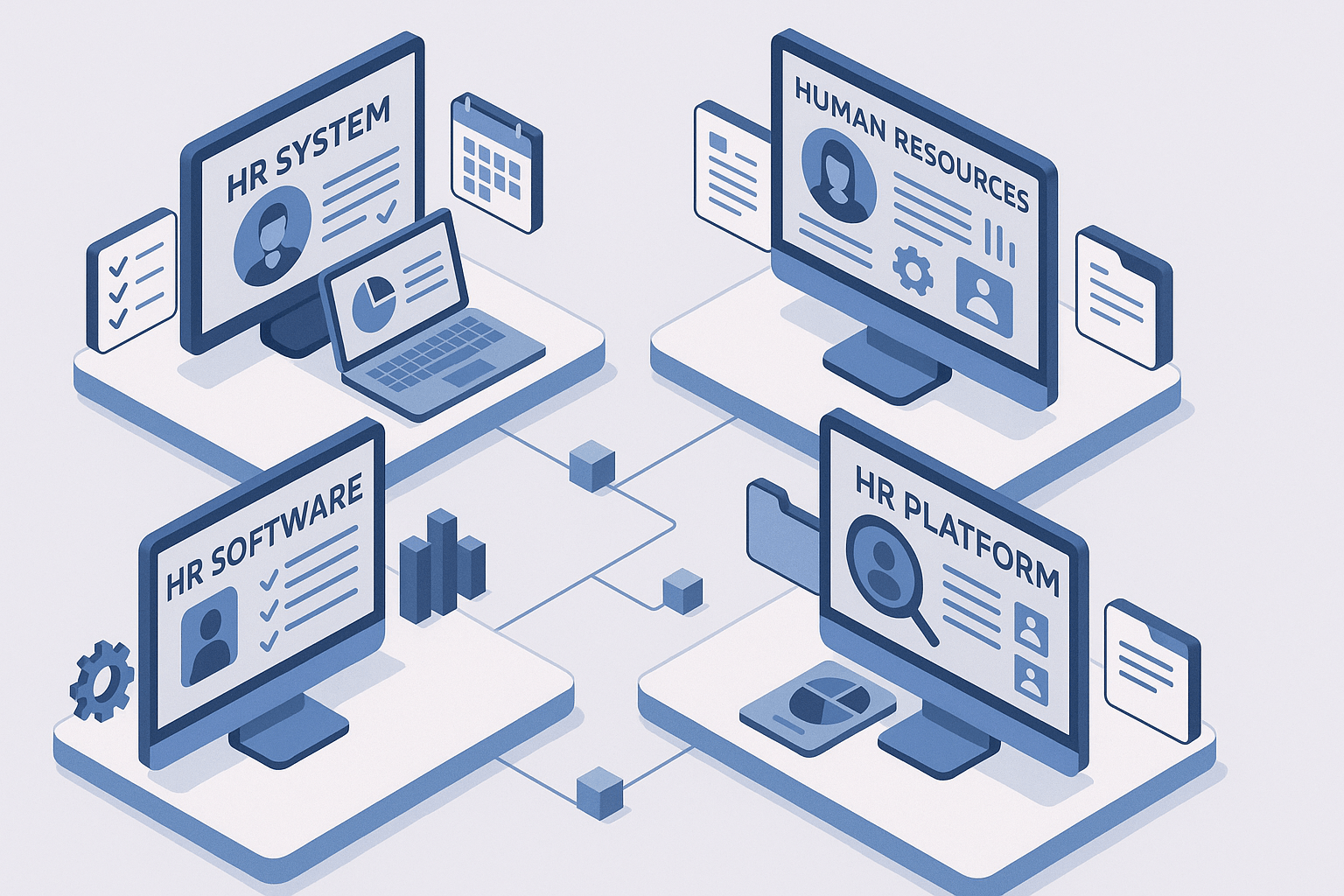Top 7 Challenges of Human Capital Management (And How to Solve Them)
October 9th, 2024
5 min read
.webp?width=2808&height=1872&name=woman-selecting-pictures-people(1).webp)
Managing your workforce today feels like juggling flaming torches—one wrong move, and you’re scrambling to put out a fire. Whether it’s compliance, retention, or keeping up with technology, the challenges of Human Capital Management (HCM) are more complex than ever. As your business grows, you’re likely facing more than just payroll and benefits administration. You’re grappling with compliance headaches, retaining top talent, and ensuring your technology keeps up with the needs of your team.
At Lift HCM, we’ve seen these struggles firsthand. With years of experience helping businesses navigate the complexities of HCM, we’ve worked with companies of all sizes to streamline their workforce management, tackle compliance, and improve overall productivity. We understand your frustrations, and we’re here to offer solutions that actually work.
In this article, we’ll dive into the top challenges of HCM and provide actionable insights on how to address them. By the end, you’ll have a clearer understanding of how to simplify your processes, enhance employee satisfaction, and ensure compliance—all while focusing on what matters most: growing your business.
Table of Contents
- What is Human Capital Management?
- 1. Employee Retention and Turnover
- 2. Compliance with Labor Law and Regulations
- 3. Employee Engagement and Productivity
- 4. Performance Management and Employee Development
- 5. Diverse and Inclusive Workforce
- 6. Managing a Remote Workforce
- 7. Technology Integration and Updates
- Mastering HCM: Your Path to Overcoming Challenges
What is Human Capital Management?
Before we address the challenges, let's clarify what human capital management (HCM) is. HCM refers to the set of practices and systems designed to hire, manage, and develop a workforce. It encompasses various HR functions, including payroll, benefits administration, employee performance, compliance, and training. The goal of HCM is not only to ensure smooth day-to-day HR operations but also to align the workforce with the organization's broader objectives.
Why is HCM more complex now than it was in the past? The workforce has changed. Employees no longer just want a paycheck—they want flexibility, opportunities for development, and a workplace that values their contributions. As a result, HCM has evolved from a back-office function into a strategic priority for businesses.
1. Employee Retention and Turnover
One of the most common and painful challenges in HCM is employee retention. High turnover rates can disrupt your business, increase recruitment costs, and impact team morale. The most cited reasons for turnover include lack of career advancement, uncompetitive compensation, and poor work-life balance.
How to Overcome This:
- Invest in Career Development: Employees are more likely to stay if they see a future with your company. Implement training programs and clear career paths to keep your workforce engaged.
- Foster a Positive Work Culture: Employee recognition, transparent communication, and flexible work arrangements can go a long way in retaining talent.
- Use Data Analytics: HCM tools can help you track patterns and identify high-risk employees before they leave. Monitoring employee engagement scores, feedback, and performance data can provide early warning signs.
2. Compliance with Labor Law and Regulations
Keeping up with changing labor laws and regulations can be a full-time job. From payroll tax updates to health and safety regulations, non-compliance can result in costly penalties and damage your company’s reputation. Whether it’s federal, state, or local laws, staying on top of the latest regulations is a significant challenge.
💡 Did you know? Non-compliance can be costly. In 2021 alone, the Department of Labor recovered $35.8 million in back wages, demonstrating the importance of staying compliant with labor laws.
How to Overcome This:
- Automate Compliance Tasks: Many modern HCM platforms, such as Lift HCM, offer built-in compliance features. Automating payroll, tax filing, and benefits administration reduces the risk of human error and keeps you updated with the latest regulatory changes.
- Regular Audits: Conduct internal audits of your HR processes and procedures to ensure everything is compliant. This helps you identify gaps before they become problems.
- Stay Educated: Invest in ongoing compliance training for your HR team to ensure everyone is up to date with the latest laws and industry best practices.
3. Employee Engagement and Productivity
In the current era of remote and hybrid work environments, keeping employees engaged has become even more challenging. Low engagement not only impacts productivity but also affects overall employee satisfaction, which can lead to higher turnover.
How to Overcome This:
- Encourage Open Communication: Provide employees with regular feedback and avenues for sharing their thoughts. Conduct employee surveys and act on the insights gained.
- Invest in Employee Well-being: Offering wellness programs, mental health days, and work-life balance initiatives can improve both engagement and productivity.
- Leverage Technology: Use HCM tools that offer self-service portals where employees can manage their schedules, access benefits, and track performance. This creates a sense of ownership and empowerment.
4. Performance Management and Employee Development
Performance management can be a complex process to navigate. Traditional annual reviews are often ineffective, and providing meaningful feedback is challenging when managers are spread thin.
How to Overcome This:
- Move to Continuous Feedback Models: Rather than waiting for annual reviews, encourage managers to provide continuous feedback throughout the year. Regular check-ins and goal-setting meetings help employees stay aligned with the company’s objectives.
- Use Data-Driven Insights: HCM software can track key performance indicators (KPIs) and provide data-driven insights that guide performance reviews and development plans.
- Mentorship Programs: Encourage a culture of mentorship where senior employees help newer team members grow, creating a system of internal development.
Did you know? With 56% of companies increasing their investment in HR technology, staying competitive requires integrating tools that streamline your HCM processes.
5. Diverse and Inclusive Workforce
Diversity and inclusion (D&I) is a priority for many organizations, but implementing effective D&I strategies can be challenging. Ensuring that your hiring, training, and promotion practices are inclusive requires continuous effort.
How to Overcome This:
- Set Clear D&I Goals: Start by defining what diversity and inclusion mean for your company and set measurable goals for improvement.
- Unbias Training: Train your managers and employees on unconscious bias to create a more inclusive workplace.
- Diverse Hiring Practices: Use HCM systems that can help remove bias from the recruitment process by anonymizing applications and promoting diverse hiring.
6. Managing a Remote Workforce
The rise of remote work has created new challenges for HCM. Managing remote employees requires different approaches to communication, engagement, and performance tracking.
How to Overcome This:
- Invest in the Right Tools: Use HCM platforms that support remote work, such as time tracking, virtual onboarding, and digital collaboration tools. Lift HCM’s cloud-based solutions can streamline many of these processes.
- Clear Communication Channels: Establish clear communication protocols. Whether it's daily check-ins via video call or regular team meetings, open communication is essential to maintaining productivity.
- Track Performance Remotely: Utilize HCM software that offers remote performance tracking and goal-setting features, ensuring that remote employees stay aligned with company objectives.
7. Technology Integration and Updates
As technology evolves, companies often find that their HR systems become outdated, leading to inefficiencies in managing human capital. Legacy systems can also make it difficult to integrate newer tools like employee self-service portals or mobile apps.
How to Overcome This:
- Adopt Cloud-Based HCM Solutions: Modern HCM systems like Lift HCM are cloud-based, offering scalability, flexibility, and easy integration with other software tools.
- Regularly Update Systems: Make it a priority to regularly review and update your HCM technology. This ensures that your systems remain secure and efficient.
- Train Employees on New Tools: Whenever you introduce new technology, invest in training to ensure that your HR team and employees know how to use it effectively.
Mastering HCM: Your Path to Overcoming Challenges
Navigating the complexities of Human Capital Management is no small feat, but with the right strategies and tools, it becomes manageable. By focusing on employee retention, compliance, engagement, diversity, and leveraging technology, you can create an agile workforce ready to meet the demands of today’s business landscape.
Lift HCM offers the solutions you need to streamline these processes, ensuring that your organization not only survives but thrives in this ever-evolving environment. Embrace these insights and take proactive steps to enhance your human capital management, setting your business on a path towards sustained growth and success.
If you’re ready to transform how you manage your workforce, Lift HCM is here to help every step of the way.
Caitlin Kapolas is a results-driven professional with a strong background in account management and retail. She is dedicated to improving client experiences and building lasting relationships. Caitlin excels in identifying client needs, resolving issues, and implementing customized solutions that drive value. Her effective communication skills ensure high client satisfaction and loyalty, making her a trusted advisor and partner in meeting client needs with precision and professionalism.
Topics:



.png?width=1536&height=1024&name=Create%20a%20background%20that%20reads%2c%20How%20Long%20to%20Keep%20P%20(1).png)


